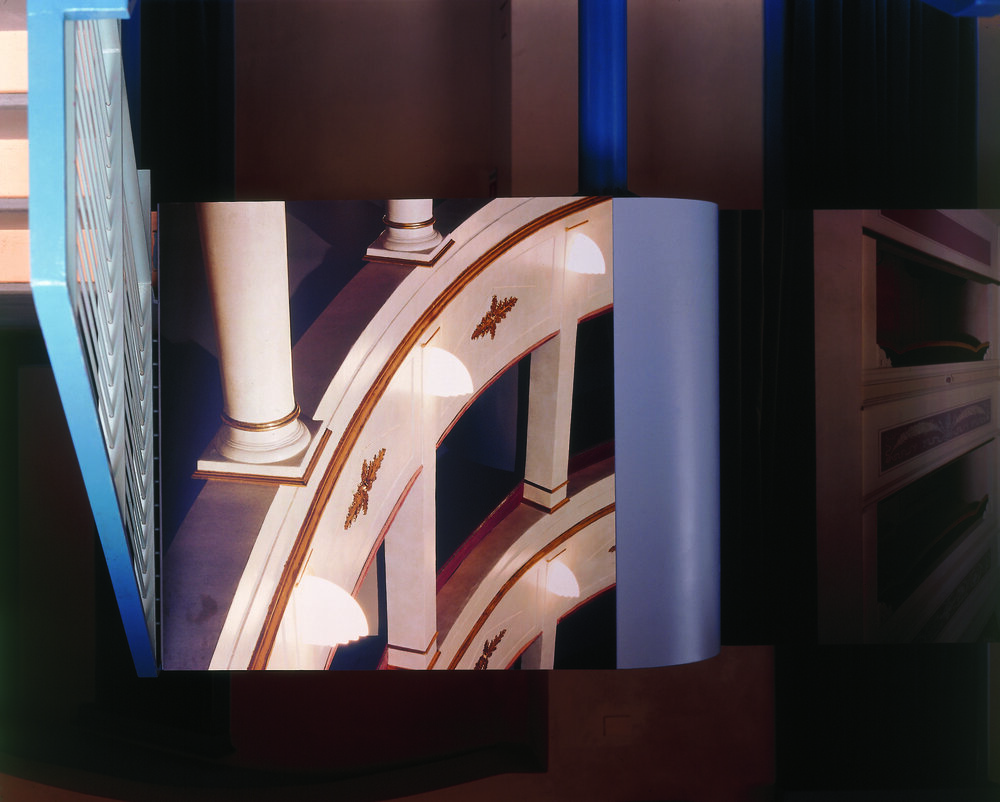In occasione della VI edizione di Art to Art, la curatrice Emanuela de Cecco ha curato il progetto speciale al teatro dei Leggieri a San Gimignano con l’intervento di Mario Airò, realizzato in collaborazione con il fotografo Attilio Maranzano.
“Una delle finalità implicite nel progetto di Art to Art è la volontà di stabilire delle connessioni reali con il territorio e con le realtà vive che vi operano. Gli artisti sono chiamati ad intervenire direttamente nel tessuto sociale e tenere conto delle caratteristiche specifiche del contesto.
A questo proposito, in parallelo con la mostra vera e propria, lo scorso anno, per la prima volta si è svolto un concorso dove alcuni giovani artisti italiani sono stati invitati a progettare gli spazi della Casa della Musica-Sonar a Colle di Val d’Elsa. Il concorso è stato vinto da Loris Cecchini che ne ha ridisegnato interamente gli interni trasformandoli in una sua installazione permanente, un ambiente-opera d’arte che quest’anno ha ospitato la festa di apertura di Art to Art.
This year, the competition focused on the foyer of the Teatro dei Leggieri in San Gimignano. Located in the Piazza della Collegiata, the theater is a significant presence in the history of the town. Built in the 18th century according to the standards of Italian tradition, the small theater has a recently renovated foyer, where the furniture elements, placed in a decidedly limited space, do not suggest any reference to the beauty found inside.
The competition, organized by the Municipality of San Gimignano in collaboration with the Arte Continua Association, required projects aimed at expanding the space from a perceptual point of view, as physically expanding the theater’s interiors was not possible. A stimulating but decidedly difficult task, precisely because it required reflection that could take into account the many limitations inherent in the starting situation. Five artists were invited to participate, selected from those who had already demonstrated sensitivity to space in their work, with the goal of choosing and implementing one of the five projects as a permanent intervention.
The artists invited to participate were Mario Airò, Sergia Avveduti, Massimo Bartolini, Margherita Morgantin, and Italo Zuffi. The jury, composed of the staff of the Arte Continua Association, the mayor, and the curators, awarded the contribution of Mario Airò, taking into account, in addition to the obvious quality of the proposal, also the possibility of transforming it into reality.
All the projects intelligently addressed the issue, resulting in very different outcomes: in addition to the winning project, two extreme solutions are worth mentioning: on one side, the radical modification of the spaces proposed by Massimo Bartolini, and on the other, the poetically misleading intervention by Margherita Morgantin, who suggested inserting a device like those typically found in churches and historical spaces to provide information about their history, but in this case, it included audio and images to take the viewer elsewhere."
Emanuela De Cecco, Arte All’Arte VII, 2002

